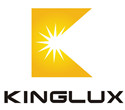Seeing is believing, how the human eye perceives LED light
The Eye
The eye is an amazing organ which gathers light and converts it into electro-chemical impulses in neurons. But, it is also a complex structure consisting of a transparent lens that focuses light on the retina. The retina is covered with two different types of light sensitive cells called rods and cones.
The Retina
 The retina contains specialized cells called photoreceptors which are located at the back of the eye. There are two basic types of photoreceptors cells called rods and cones. The cones are the photoreceptor cells that are most sensitive to three colors red, green and blue. Cones are what your eyes use to see in daylight. The retina contains specialized cells called photoreceptors which are located at the back of the eye. There are two basic types of photoreceptors cells called rods and cones. The cones are the photoreceptor cells that are most sensitive to three colors red, green and blue. Cones are what your eyes use to see in daylight.
Rods are the photoreceptor cells in the retina that can function in dim light.
Seeing is believing
There are three basic types of vision, photopic, scotopic and mesopic.
Photopic vision is vision under well-lit conditions, which provides for color perception, high acuity and function primarily due to cones cells in the eye or it’s our human response to daylight.
Scotopic vision is monochromatic vision in low light conditions where you have no color vision and poor acuity and which functions primarily due to rod cells in the eye.
Mesopic vision is a combination of photopic vision and scotopic vision in low light conditions. A good example would be at dusk.
Vision and Color
According to research done for The Department of Energy, the color of light has inherent qualities that have not been completely understood. They believe using light sources with spectra more like daylight but at the same light level make the pupil smaller which improves visual acuity and affects circadian rhythm.

The above comparison of Daylight, Incandescent, LED and Fluorescent Light Spectrum Metrics, shows how the LED light spectrum looks closer to daylight spectrum and has a high amount of blue light.

They also found that traditionally, light has been measured using warmer lights sources using photopic vision. But measuring this type of vision misses the contribution of the peripheral photoreceptors and warmer lights provides less energy to the photoreceptors.
But, what they did find was that if they kept the photopic light level the same but changed the spectrum of light to include more blue, the pupil opening became smaller and visual acuity was improved. The study concludes with these basic findings. That an ideal light source would have a higher S/P ratio for visual clarity, (the S/P ratio measures at low light levels the efficiency one can obtain just by using different light receptors in the human eye). Lastly, high color rendering properties to render objects and spaces realistically and a high efficacy to minimize energy consumption.
How do LED lights fit into all of this?
The graph below represents three different ways to create white light when designing LED’s. The most prevalent in today’s modern LED’s is the first option (Phosphor Conversion) a process where a blue gallium nitride diode excites a yellow emitting phosphor. The result of mixing blue and yellow creates a white light. By changing or varying the yellow phosphor it changes the color of white to either a warmer light or cooler light. By design LED light provides a high level of blue light as seen on the spectrum comparison charts shown above.

Graph from the US Department of Energy
Why would you choose an LED light source over conventional lighting?
LED lights perform significantly better for all three areas of vision, photopic, mesopic and especially scotopic. We talked earlier how LED lights were higher in the blue color spectrum and it has a direct effect on your scotopic vision at night. Since LED’s mimic daylight better than any other light source it provides the best light quality at night. It greatly improves color perception and acuity over metal halide or high pressure sodium lighting. Many LED lights have incredibly high color rendering values which makes objects appear more like they were outside providing better perception. It is especially important photopic vision.
LED lights are up to 90 percent more efficient than traditional lighting sources saving you substantially. Since the eye perceive that there is more available light using the same amount of energy you can actually design an LED lighting system with far less wattage but achieve better results. They department of energy believes that the implementation of LED lighting systems could reduce the electrical consumption in the United States by nearly one half or 46% by the year 2030. The savings over the 20 year period would be $250 billion dollars and would eliminate 1,800 million metric tons of greenhouse gases released into the environment.
LED Lights are much more environmentally friendly
LED lights contain no mercury or lead and have the highest rated efficiency of any lighting source available. By implementing an LED lighting solution you will eliminate harmful mercury from the environment and substantially reduce greenhouse gases. Although it varies from manufacturer and lamp model a typical 400w Metal Halide lamp will have between 40-65 mg of mercury with an average life span of 20,000 hours or about 5 years. A typical HO T5 linear fluorescent lamp will have between 5.6 – 20 mg of mercury and an average life span of 20,000 hours as well.
LED lights are the perfect lighting source and meet all of the requirements, they have a high blue spectrum allowing for better perception in all spectrums, they have the best energy efficiency and are the most environmentally friendly.
|


